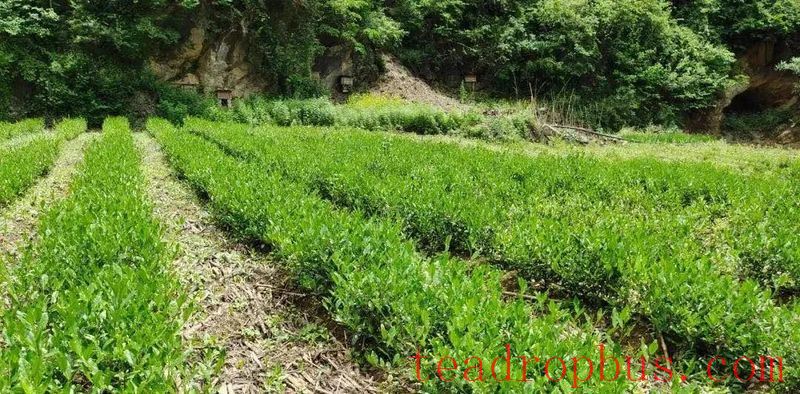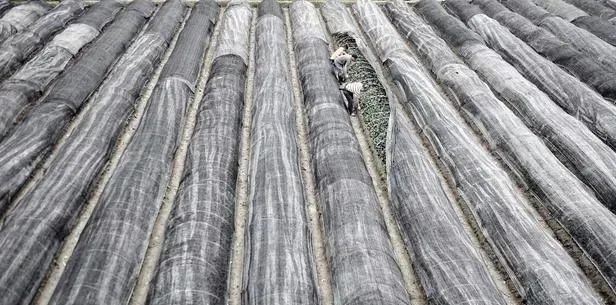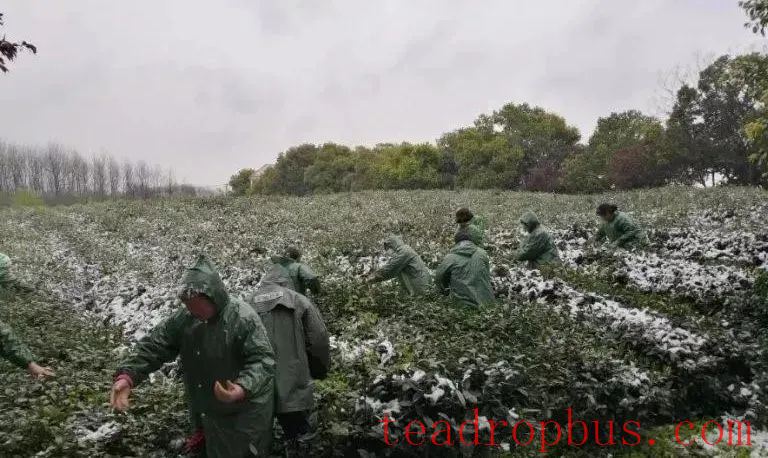On February 15th, we welcomed the Lantern Festival, marking the end of the Year of the Tiger's Spring Festival!
According to Hubei Meteorological reports, from west to east across our province, rainy and snowy weather will return!
And on the early morning of February 7th, a heavy snowfall across Hubei left Tea gardens and tea farmers still shaken… Today, “Please Enjoy a Cup of Hubei Tea” shares some techniques for coping with snowstorms in tea gardens and post-disaster management to help mitigate the impact of this late spring cold snap on Hubei's Spring Tea.
Preventive Measures

Hasten to Lay Straw for Insulation
For tea gardens, especially young gardens, that have not undergone straw laying during winter, seize the opportunity before the arrival of low temperatures and ice to spread grass over the garden at a thickness of more than 10 centimeters, which can reduce the degree and depth of frozen soil and serve as insulation and water retention. Where conditions permit, shade nets can be used to cover the canopy of tea trees to protect them from snow and frost.
Canopy Covering
Cover the tea canopy with shade nets, plastic films, or use rice straw, miscellaneous grasses over the tea plants. The covering should not be too long or too tight and should be removed promptly when the temperature rises above 0°C or when there is sunshine.

Sprinkling Water Irrigation
For tea gardens equipped with sprinkler or drip irrigation systems, measures such as sprinkling water or irrigating can be taken during periods of low temperature to slow down the decrease in air and soil temperature.
Spraying Plant Growth Inhibitors
During winter management of tea trees, spraying plant growth inhibitors can provide insulation, increase the lignification of branches, and enhance the tree's cold resistance.
Stem Base Cultivation
Increase the amount of soil between tea rows to a thickness of 5-10 centimeters, serving to insulate and protect the tea trees against the cold.
Post-Disaster Management

Timely Clearing of Snow Accumulation
For tea gardens with thick snow accumulation, shake off the snow on the tea trees in time to prevent branches from breaking or tearing. For nursery arch-shaped sheds, remove the snow on the surface according to the situation and promptly repair any damaged nursery frames due to heavy snow. Additionally, tea garden terraces, steps, ditches, and roads damaged by heavy snow and freezing should also be repaired in a timely manner to prevent soil erosion and to ensure proper drainage in the future, preventing secondary damage.
Timely Pruning and Trimming
After suffering from frost, parts of the tea tree's branches and leaves lose vitality, so pruning must be done to encourage the regrowth of new shoots and cultivate the framework and picking surface. The principle of “catering to the majority, consistency within the same garden” should be followed, and different pruning methods should be adopted based on the severity of the frost damage in the tea garden. (1) Mild frost damage (only leaves affected): no pruning or light pruning as needed. (2) Moderate frost damage (productive branches affected) and severe frost damage (main branches affected): prune when the boundary between dead and healthy parts is clear, with the cut 1-2 centimeters deeper than the dead part to prevent the entire branch from dying and stimulate the emergence of axillary buds or adventitious buds below the cut. For severely frost-damaged 1-2-year-old young tea trees, if the mortality rate is not high, shaping pruning can be performed, cutting off some dead branches and replanting any missing plants; if large areas of young tea trees are dead, transplant and replant them. Generally, pruning should be performed around the end of February to early March, after local temperatures have stabilized and risen. Pruning too early can result in a late spring cold snap, while pruning too late can delay rejuvenation.

Timely Shallow Tilling and Fertilization
To minimize the damage caused by frost to tea trees, take advantage of sunny days to shallowly till and apply the “spring sprouting fertilizer” in a timely manner, applying 25-30 kg of urea per mu, and simultaneously spraying foliar fertilizer (0.4% urea plus 0.3% potassium dihydrogen phosphate solution) to promote the recovery of the tea trees' vitality, sprouting of buds, and growth of new shoots.
Rejuvenate the Canopy
After pruning, tea trees affected by frost should be allowed to grow appropriately to restore the canopy. For lightly pruned tea trees, pick the spring tea early and tenderly for premium tea, leaving leaves later. For severely frost-damaged tea trees that have been subjected to stump cutting or heavy pruning, the requirements are the same as those for rejuvenating old tea trees, focusing on nurturing and re-cultivating a high-quality, high-yielding canopy.
If there is any infringement, please contact us to delete it.